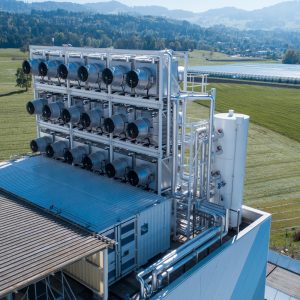
The Global Carbon Reward is a system-changing policy for funding climate mitigation together with healthy ecosystems, vibrant communities, and reliable clean energy.
Quote
Introduction
Dirty Growth
Balanced Growth in Carbon
Balanced growth in carbon is a major new development pathway that we believe is superior to other development pathways, such as ‘green growth’ and ‘degrowth’. The new development pathway is based on a dual-economy architecture, including a new mitigative economy that will interact with the regular consumptive economy for the purpose of reallocating financial capital and material resources. Balanced growth in carbon will involve a tradeoff between two universally important objectives, as follows:
● the consumptive economy will aim for socially efficient production and consumption, whereas
● the mitigative economy will aim for safe and regenerative carbon cycling.
As the two economic systems strive for their specific objectives, a trade-off will emerge because energy is always in finite supply.
This project provides a theory, a moral framework, and a policy toolkit for explaining and implementing the approach. The theory includes a new ‘systems diagram’ for describing the dual-economy architecture and for explaining the wealth transfer process for climate mitigation at speed and scale.
Updated 11 February 2024
Note that ‘optimal growth’ has been replaced with ‘balanced growth in carbon’ for reasons of clarity.
‘Carrot and Stick’ Carbon Pricing
The main focus of this website is a new type of monetary finance, called a ‘Global Carbon Reward’. The carbon reward will be a global ‘carrot’ for incentivising and funding climate mitigation and co-benefits.
The purpose of the carbon reward is to improve carbon safety using three key strategies:
● funding sufficient greenhouse gas removal, and on a global scale
● funding sufficient conventional climate mitigation, including new clean energy infrastructure
● funding regeneration of natural, social and built capital.
The economic policy for the carbon reward has four key features:
● a global price for mitigated carbon
● no direct costs
● no carbon offsetting and no carbon trading in the policy
● stakeholder representation.
The website introduces to the Global Carbon Reward policy and project, including the new theory on carbon pricing.
Updated 11 February 2024
Interview
 WSJ: Could a Carbon Coin Save the Planet?
WSJ: Could a Carbon Coin Save the Planet?Could a ‘Carbon Coin’ Save the Planet?
Scott Patterson at the WSJ takes a look at why a carbon currency (aka “carbon coin”) could transform the economy. He talks with Australian civil engineer Delton Chen, to review the carbon currency that is portrayed in Kim Stanley Robinson’s climate-catastrophe novel.
Feature Presentation
BARD COLLEGE
Why “Carbon Rewards” Should be Adopted to Resolve the Climate Crisis
Feature Podcast
KIM STANLEY ROBINSON
KATE RAWORTH
DELTON CHEN
Will fighting climate change require restructuring the global economy? Is a “carbon currency” the most intuitive or efficient solution to the climate crisis? Casey Pickett chats with Kim Stanley Robinson, Kate Raworth (Doughnut Economics), and Delton Chen. The Ministry for the Future By Kim Stanley Robinson Cover Book
The Ministry for the Future By Kim Stanley Robinson Cover BookGetting Started
Demonstration
In a real-world application of the Global Carbon Reward policy, the trading of the carbon currency will not involve any carbon offsetting and this is because the carbon currency does not convey the ownership of mitigated carbon. The carbon currency only acts as a store of value. Information on the pricing theory and the system of governance can be found via the links in the main menu.
Updated 5 January 2022
Carbon Rewards
Reward Weightings


XR Interview
March 7th, 2024












